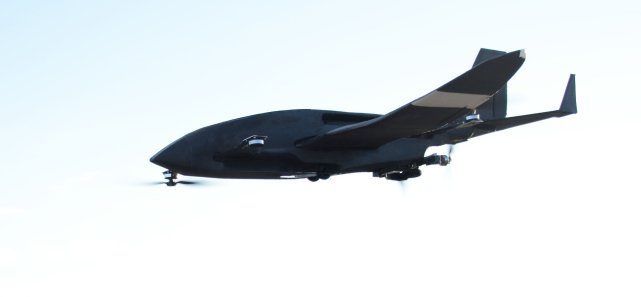 As unmanned aircraft systems (UAS) become a more familiar presence in American skies, new companies are getting in on the action. Krossblade Aerospace Systems, a startup created in 2014, aims to put a drone that could transform emergency response systems on the market soon.
As unmanned aircraft systems (UAS) become a more familiar presence in American skies, new companies are getting in on the action. Krossblade Aerospace Systems, a startup created in 2014, aims to put a drone that could transform emergency response systems on the market soon.
Called SkyProwler, the drone features an automatic drop door, allowing the drone to drop cargo and distribute supplies while hovering, a capability that could prove very beneficial for emergency services.
For example, instead of sending an ambulance with emergency medical equipment, such as insulin or an EpiPen, a hospital could send a drone instead. Krossblade estimates that an ambulance costs around $1,500, and takes 10 to 15 minutes to arrive, while SkyProwler will cost only $50 and take six to eight minutes on average.
“Instead of dispatching an ambulance, a drone can be dispatched in certain simple but very urgent emergencies, e.g. delivering an EpiPen, or Insulin or a defibrillator. The other emergency response of course can be to use the SkyProwler and its camera and microphone to survey an emergency scene and possibly initiate first communication with victims,” Daniel Lubrich, the CEO of Krossblade Aerospace Systems, told Homeland Security Today.
SkyProwler also comes with a camera, called a 3D Stabilized Eye Cam, which provides clear pictures to users. It also utilizes what the company refers to as a “switchblade mechanism.” It takes off using four rotors, similar to a helicopter, and, once in the air, the rotors fold away and the drone can then fly like an aircraft. This means that the drone doesn’t require much space to take off and can travel more quickly.
Krossblade chose to create a Kickstarter, which will run until June 18, to fund SkyProwler. Their target was $200,000, and they surpassed that goal recently. SkyProwler will be available to Kickstarter backers in December and to the general public next year.
After SkyProwler, Krossblade is also looking to implement SkyCruiser, a larger aircraft that can carry up to five people. SkyCruiser contains the same switchblade mechanism as SkyProwler. The SkyCruiser is on a longer timeline than the SkyProwler, as Lubrich does not foresee it being available until 2020. The cost of the SkyCruiser will be around $300,000.
Lubrich envisions different uses for SkyCruiser. SkyCruiser does not need to take off from an airport or helipad, due to the switchblade mechanism, so it could be used as a convenient form of travel. SkyCruiser can travel for up to 1,000 miles at 300 miles per hour. It could also be used to transport people in need of medical attention from remote locations.
Although Lubrich is optimistic about a market for SkyCruiser, he doesn’t think that it will replace emergency response mechanisms already in place today.
“SkyCruiser can be helpful, but traditional land based ambulances will not go away,” Lubrich said.
Drones are becoming more common every year and are being used for multiple applications, including for law enforcement, crowd control, emergency and disaster response and even fire management. Currently, however, the Federal Aviation Administration (FAA) keeps significant restrictions on the use of drones.
Public entities such as law enforcement or government agencies can apply for a Certificate of Waiver or Authorization to use drones. Commercial businesses have to apply to the FAA to use drones on a case-by-case basis, which has frustrated the commercial drone industry.
“I think that the unwillingness of the FAA to let people use drones commercially, e.g. for taking pictures, is highly detrimental to the drone market and the economy,” Lubrich said. “Why can drones that can be flown for a hobby not be used for commercial purposes? Surely a commercial pilot/operator is even safer than a hobby pilot.”
Amid mounting concerns that the FAA’s slow pace in developing a plan to open the skies to commercial drones has prevented the drone industry from taking off, earlier this year the FAA finally proposed a framework of regulations that would allow routine use of certain small UAS use in today’s aviation system.
Homeland Security Today reported that, although the proposal would pave the way for widespread drone use by expanding small UAS operations, it laid out a number of safety restrictions, including the controversial requirement limiting operation of drones only within the visual line-of-sight of the operator.
The restriction prompted a firestorm of criticism from commercial industries. For example, Amazon is working on a project called Prime Air, which seeks to deliver packages to customers via small UAS. The project would require beyond-light-of-sight use of drones.
The FAA has, however, opened the proposal up for comments on whether the rules should permit operations beyond-line-of-sight, and if so, what the appropriate limits should be.
“I see a huge potential for the drone market yet it is being stifled over concerns of a technology that has done very little harm,” Lubrich continued. “Compare this to tens of thousands of deaths in car accidents in the US. One or two states have licensed autonomously driven cars, weighing 2000 pounds and going at 60 mph or so. Yet a 4 or 5 pound drone cannot fly autonomously at 40 mph, at all?”
Source: Homeland Security Today
